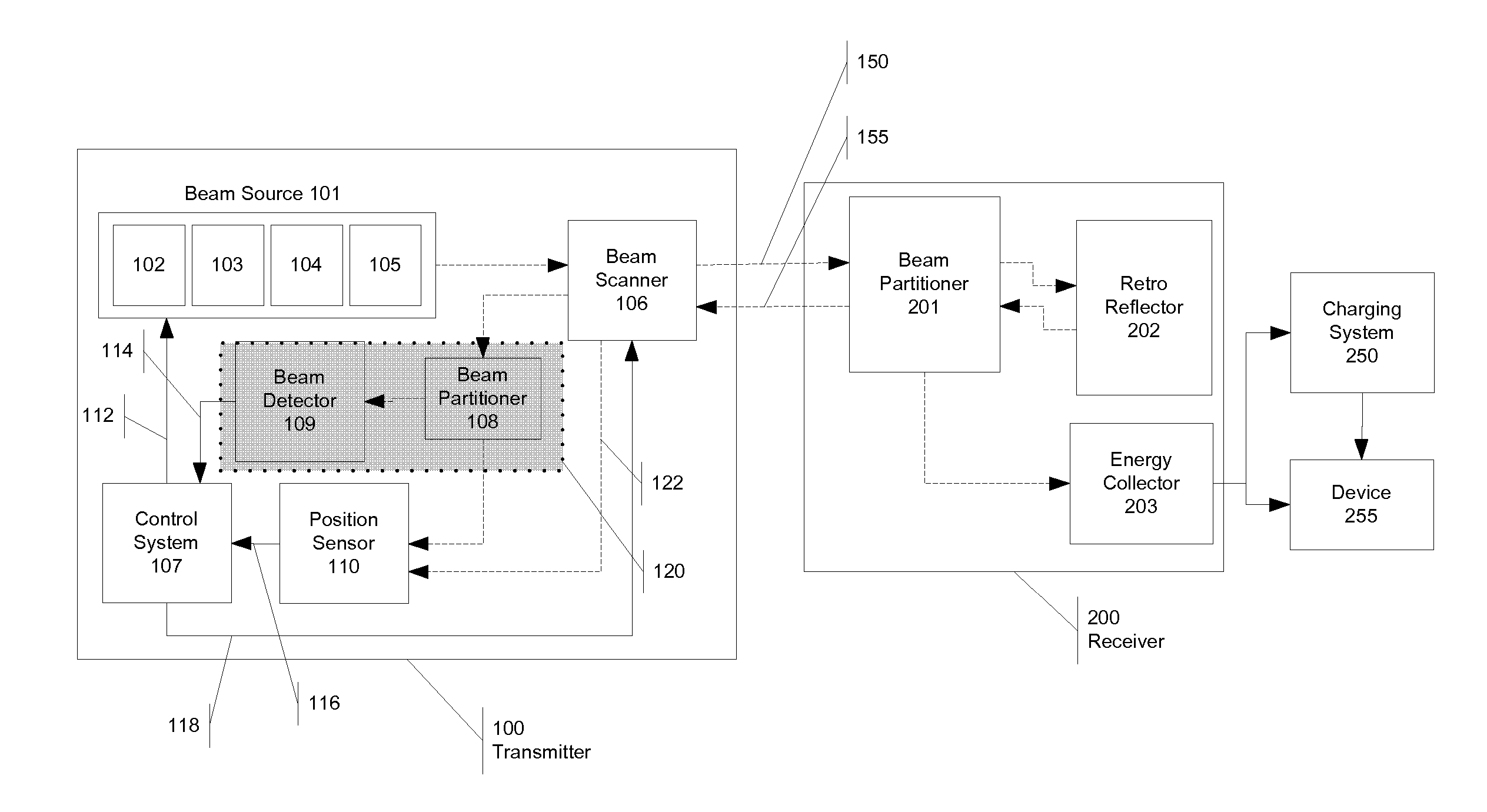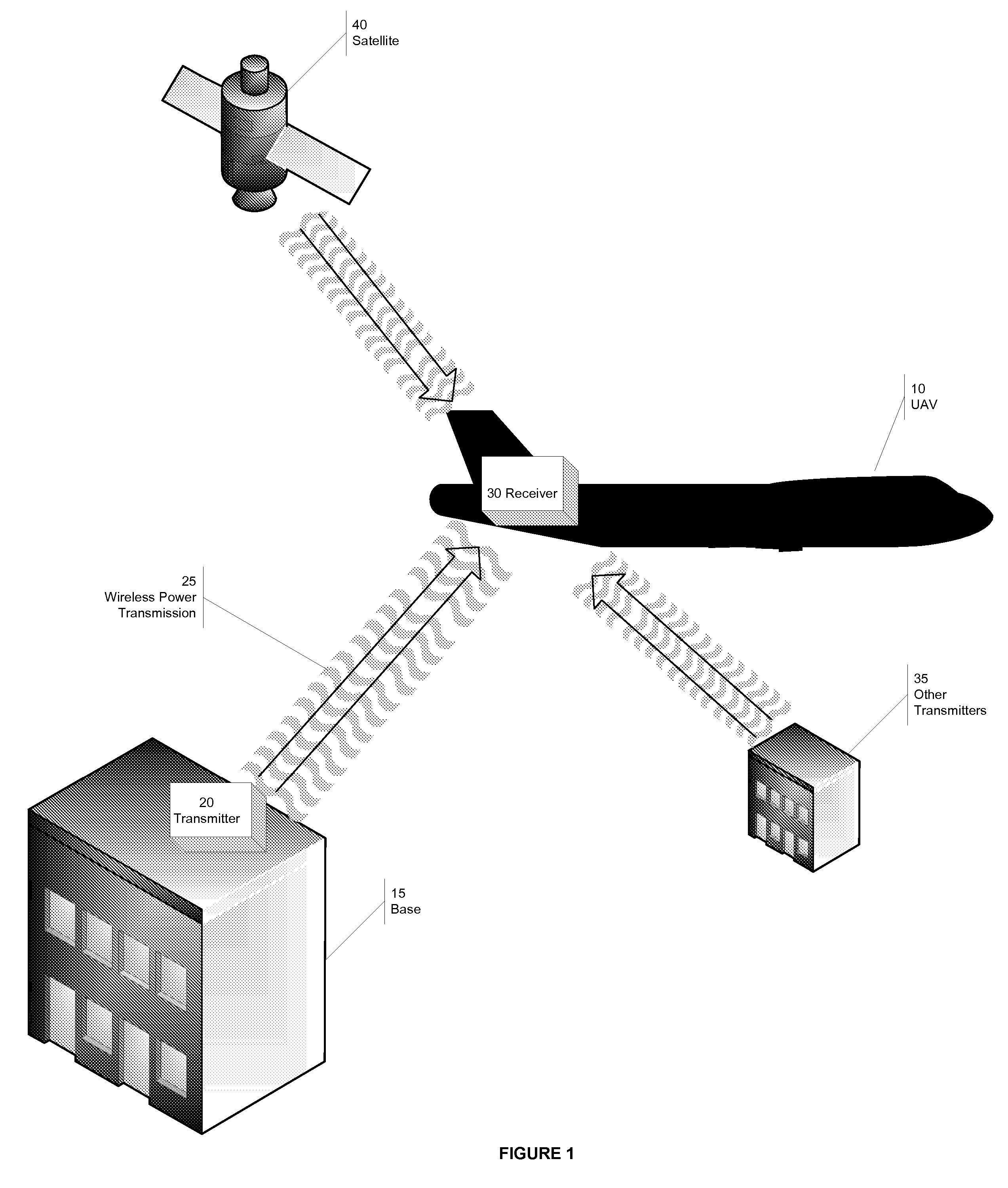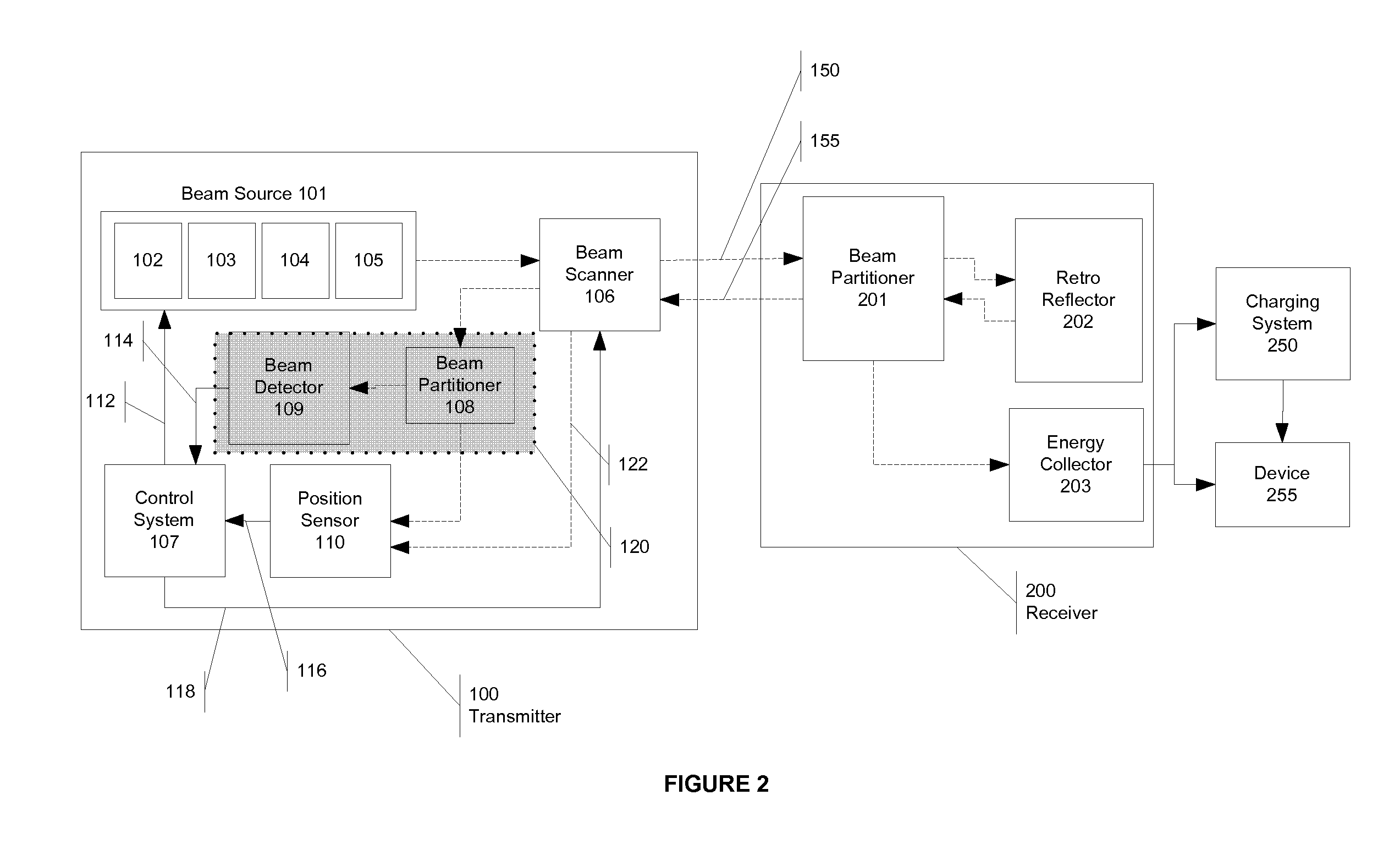Wireless Power Transmission System
a power transmission system and wireless technology, applied in the field of wireless transmission of power, can solve the problems of difficult or even impossible to provide a physical wire to the intended target, moving objects present a particularly difficult problem in transmitting energy, detection, reception and transmission equipment must also be very larg
- Summary
- Abstract
- Description
- Claims
- Application Information
AI Technical Summary
Benefits of technology
Problems solved by technology
Method used
Image
Examples
Embodiment Construction
[0030] What is described below is a novel wireless energy transmitter and receiver for wireless energy and data transmission over large distances. FIG. 1 shows one example of an application of the technology described herein. An unmanned air vehicle (UAV) 10 requires significant power and, in its optimal operation, should be in the air as much as possible. Unfortunately, because UAVs 10 consume power quickly, their flying time, and consequently their range, is limited. The power transmission methods and devices described herein can be used to transmit energy efficiently and effectively to the UAV 10, dramatically increasing the UAV's range and flying time. Specifically, the base 15 contains a transmitter 20 that transmits wireless power 25 to a receiver 30 located on the UAV 10, allowing the vehicle to have a much longer surveillance runs. Other strategically positioned power transmitters 35 could be placed near the UAV's 10 surveillance area to further increase the UAV's 10 range a...
PUM
| Property | Measurement | Unit |
|---|---|---|
| reflectance | aaaaa | aaaaa |
| reflectance | aaaaa | aaaaa |
| distance | aaaaa | aaaaa |
Abstract
Description
Claims
Application Information
 Login to View More
Login to View More - R&D
- Intellectual Property
- Life Sciences
- Materials
- Tech Scout
- Unparalleled Data Quality
- Higher Quality Content
- 60% Fewer Hallucinations
Browse by: Latest US Patents, China's latest patents, Technical Efficacy Thesaurus, Application Domain, Technology Topic, Popular Technical Reports.
© 2025 PatSnap. All rights reserved.Legal|Privacy policy|Modern Slavery Act Transparency Statement|Sitemap|About US| Contact US: help@patsnap.com



